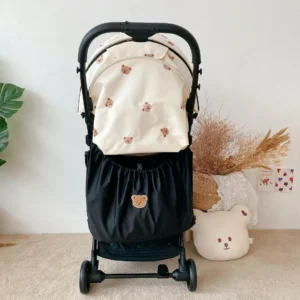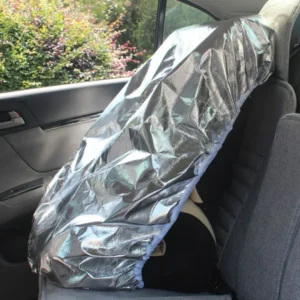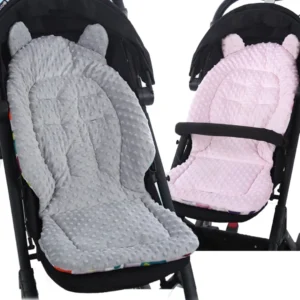Imagine a time when parents were burdened with carrying their infants while running errands or taking leisurely strolls.
It was a challenge until the invention of baby strollers revolutionized the way we transport our little ones.
From their humble beginnings in the early 20th century to their sophisticated designs today, let’s delve into the captivating story of when strollers were first invented and the incredible journey that led to their modern-day marvels.
when were strollers invented
Strollers were first invented in 1906 by Parisian E.
Baumann with the creation of the collapsible baby carriage called “The Dream.” However, it wasn’t until after World War I that the first pram appeared in Landau, Germany.
These early prams featured two facing seats placed parallel to the axles and a replaceable hood.
Over time, strollers have evolved with modern features such as mosquito nets, adjustable umbrella stands, and spare wheels.
Today, prams are made with materials like aluminum or steel for the frame, cloth for the seat and hood, and rubber and plastic for handles and wheels.
They are typically manufactured on an assembly line, where frame components are bent, dipped in an antioxidizing solution, and spray-painted.
The components are then assembled using rivets, screws, and/or bolts, while the seat and hood are cut from material and stitched together.
Quality control regulations must be met for strollers produced in the United States, ensuring their safety and durability.
Key Points:
- Strollers were invented in 1906 by Parisian E. Baumann with “The Dream.”
- The first pram appeared in Landau, Germany after World War I.
- Early prams had two facing seats, parallel axles, and a replaceable hood.
- Strollers have evolved with features like mosquito nets and adjustable umbrella stands.
- Modern prams are made with materials like aluminum, steel, cloth, rubber, and plastic.
- Strollers are produced on assembly lines, with frame components bent and spray-painted, and seat and hood material cut and stitched together.
Check this out:
💡 Did You Know?
1. Did you know that strollers were first invented in the late 1700s? They were initially designed for the wealthy, as a means to transport their young ones while strolling through parks or gardens.
2. The first strollers were also known as “perambulators” or “prams.” These early models had large, elegant wheels and often featured a parasol attachment to protect the infant from sunlight.
3. While strollers were introduced in the 18th century, they were not widely adopted until the mid-19th century. It wasn’t until then that their design became more practical and affordable, making them accessible to a broader range of socioeconomic groups.
4. In the early 20th century, strollers underwent a significant transformation with the introduction of collapsible frames. This innovation allowed for easy folding and storage, making them even more convenient for parents on the go.
5. In recent years, strollers have seen further advancements, integrating features such as adjustable handles, cup holders, and even built-in speakers. Some high-end models now come with advanced suspension systems, allowing for a smoother ride for both the baby and the pusher.
The Invention of Collapsible Baby Carriages
The history of modern baby strollers dates back to the early 20th century when the first collapsible baby carriage, called “The Dream,” was invented by Parisian E. Baumann in 1906. Baumann’s innovative design allowed the carriage to fold down into a compact and portable size, making it convenient for parents to transport their infants. This breakthrough invention revolutionized the way parents traveled with their babies, paving the way for future advancements in stroller technology.
The collapsible baby carriage, or stroller as we know it today, quickly gained popularity and became a common sight in cities around the world. Its ability to fold down made it easier to store in small spaces and transport on public transportation. This invention marked a significant turning point in the way parents cared for their infants, providing them with a convenient and practical solution for outdoor mobility.
- The first collapsible baby carriage, “The Dream,” was invented by Parisian E. Baumann in 1906.
- Baumann’s design allowed for compact and portable folding.
- The invention revolutionized how parents traveled with their babies.
- The stroller’s ability to fold down made it easier to store and transport.
- This development provided a convenient and practical solution for outdoor mobility.
“The history of modern baby strollers can be traced back to the early 20th century when the first collapsible baby carriage, called “The Dream,” was invented by Parisian E. Baumann in 1906.”
**-
The Evolution of Prams in Landau, Germany
After World War I, a significant development in stroller design emerged in Landau, Germany. It was here that the first pram, short for perambulator, made its appearance. The Landau prams featured two facing seats placed parallel to the axles, allowing for easy interaction between siblings or caregivers. This design also incorporated a replaceable hood, providing protection from the elements and ensuring the comfort and safety of the child.
The introduction of prams in Landau sparked a new era in stroller design. With their spacious seating arrangement and adjustable hoods, these prams became a preferred choice for parents looking for a comfortable and stylish option. As the popularity of prams grew, various improvements were made to enhance their functionality and aesthetics.
Innovative Accessories for Prams
As prams continued to evolve, manufacturers introduced a range of innovative accessories to enhance their functionality and convenience for parents. These accessories include:
- Mosquito nets: to protect infants from pesky bugs
- Adjustable umbrella stands: to provide shade on sunny days
- Spare wheels: for quick replacements in case of damage or wear.
These accessories allow parents to customize their prams based on their specific needs, providing added value to the overall strolling experience. Their introduction showcases the commitment of manufacturers to meet the changing demands and preferences of parents.
“The introduction of these innovative accessories showcased the commitment of manufacturers to meet the changing demands and preferences of parents.”
Modern Features of Today’s Prams
In today’s world, prams have undergone further evolution and modernization. They now feature small bicycle-type wheels that offer excellent maneuverability and durability. The aerodynamic designs of modern prams make them more efficient and stylish than ever before. These advancements in design and technology have transformed the stroller industry, providing parents with a wide array of options to choose from.
Modern prams are also equipped with various features to ensure the utmost comfort and safety for babies. These features include adjustable seat positions, padded harnesses, and easily accessible storage compartments, making strolling experiences more enjoyable for both parents and infants. With a focus on ergonomics and ease of use, today’s prams are designed to meet the diverse needs of modern families.
Materials Used in Baby Stroller Manufacturing
The manufacturing process of baby strollers involves the use of different materials to ensure strength, durability, and comfort. Aluminum or steel is commonly used for the frame, providing a sturdy foundation for the stroller. The seat and hood are typically made from cloth materials, which are carefully cut and stitched together using modern sewing machines.
Rubber and plastic materials are used for the handles and wheels, as they provide a comfortable grip and smooth maneuverability. The careful selection of materials ensures that strollers are able to withstand the rigors of everyday use while maintaining a high level of functionality and aesthetics.
Quality Control Regulations for Baby Strollers
In the United States, the production of baby strollers is subject to strict quality control regulations governed by organizations such as ASTM (American Society for Testing and Materials). ASTM standard number 833-97 outlines the requirements for safety, durability, and performance of baby strollers.
Manufacturers must adhere to these standards to ensure that their products meet the highest level of safety and quality. This strict adherence to quality control regulations provides parents with peace of mind knowing that the stroller they choose for their child has undergone rigorous testing to ensure its reliability and safety.
The invention of collapsible baby carriages in 1906 marked a significant milestone in the history of strollers. The subsequent evolution of prams in Landau, Germany, and the introduction of innovative accessories enhanced the functionality and convenience of strollers. Today, modern prams boast advanced features and materials that ensure comfort, safety, and durability.
Quality control regulations ensure that baby strollers produced in the United States meet the highest standards. The continuous advancements in stroller design and manufacturing have improved the strolling experience for parents and their little ones.
FAQ
What did people use before strollers?
Before the advent of strollers, caregivers relied on various methods to transport their babies. In ancient times, slings were commonly used to keep infants close to their parents while allowing freedom of movement. This practice dates back to ancient Egypt, where pharaohs were often depicted carrying their babies in beautifully crafted slings. As time progressed, baskets and front/backpacks became popular alternatives to facilitate the transportation of infants, ensuring they remained secure and close to their caregivers.
It is fascinating to observe the evolution of baby transportation throughout history. From ancient slings to innovative strollers, each era brought its own unique solutions to the age-old challenge of keeping babies safe and close while allowing parents the freedom to move and engage in daily activities.
Where did baby stroller originate?
The origins of the baby stroller can be traced back to 1733 when the first baby carriage was introduced by English architect William Kent. This innovative invention was initially crafted for the child of the third Duke of Devonshire. The carriage, resembling a shell-like structure, was specifically designed to be pulled by either a dog or a Shetland pony, showcasing the creativity and ingenuity of its creator.
What is an old Timey stroller called?
In the UK, an old timey stroller is commonly referred to as a “pram.” The term “pram” is derived from the word “perambulator” and is a generic name for a baby carriage or stroller. Although in other parts of the world, “pram” might evoke images of a sleek modern stroller, in the UK it is still used to describe any type of baby transport device.
What is the oldest a child should be in a stroller?
It is generally recommended to limit stroller use once children have passed the toddler stage in order to encourage them to develop the habit of walking. Walking is not only great exercise for their muscles, bones, and heart but also helps in their overall development. Therefore, it is advisable to consider transitioning away from strollers between the ages of 3 and 4 to foster their independence and physical activity.




